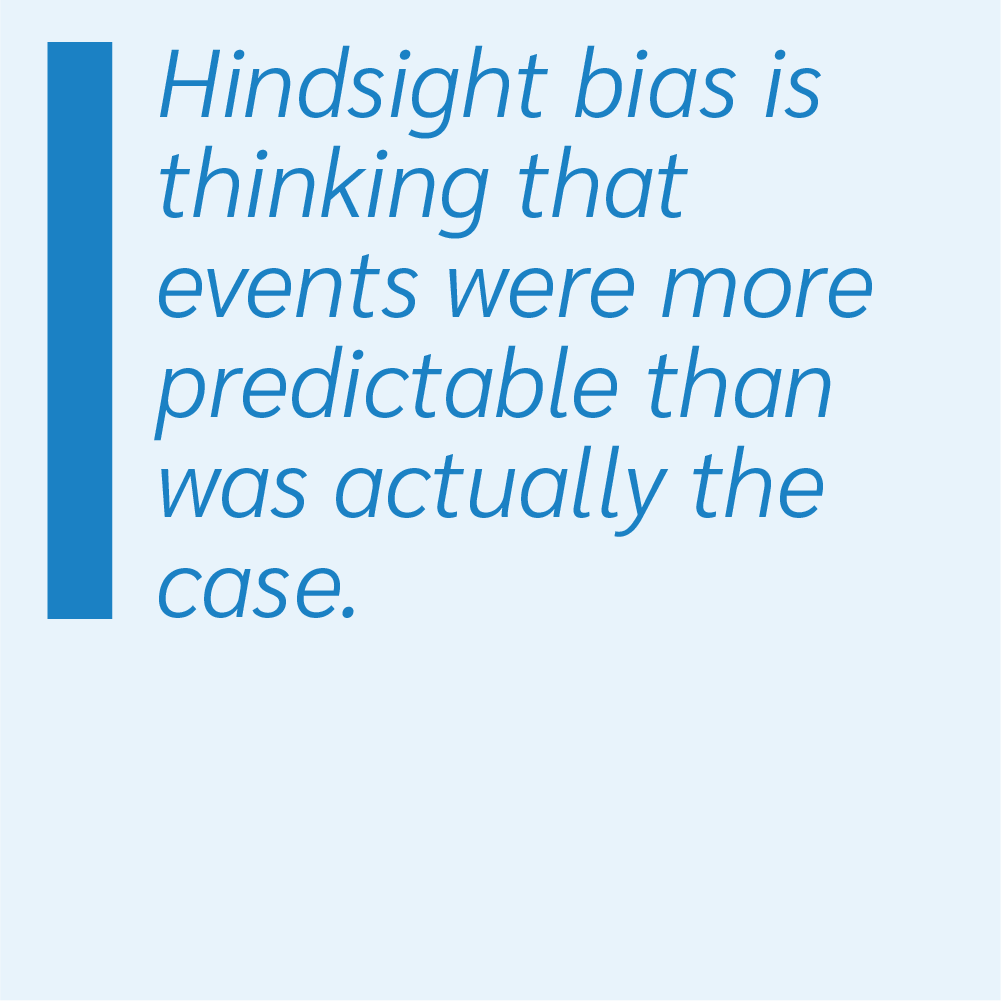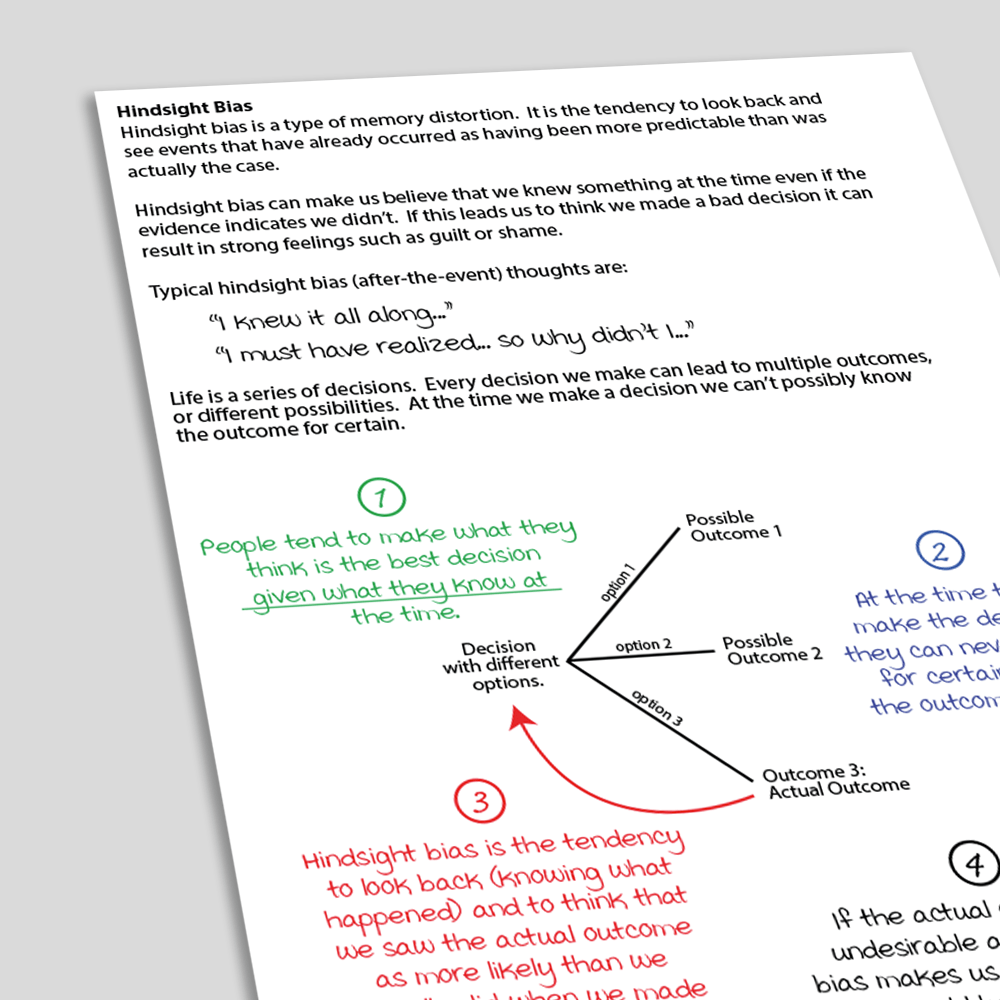Introduction & Theoretical Background
Hindsight bias is a form of cognitive bias / cognitive distortion. Once a situation has occurred hindsight bias can make that event seem more obvious and predictable than was actually the case at the time. People may say "I knew it all along" or "why didn't I do something differently?". Hindsight bias can be particularly problematic following traumatic events – individuals may come to unfairly blame themselves for things that they did not predict (and could not have predicted) in advance and may feel particularly responsible or guilty as a consequence.
Overcoming hindsight bias requires reappraisal of a situation from the perspective of the individual at the time. Helpful questions to explore hindsight bias might include "given what you knew at the time what reason did you have to think that X might happen?", "when did you start to feel guilty, and what information had you learned that led to you



